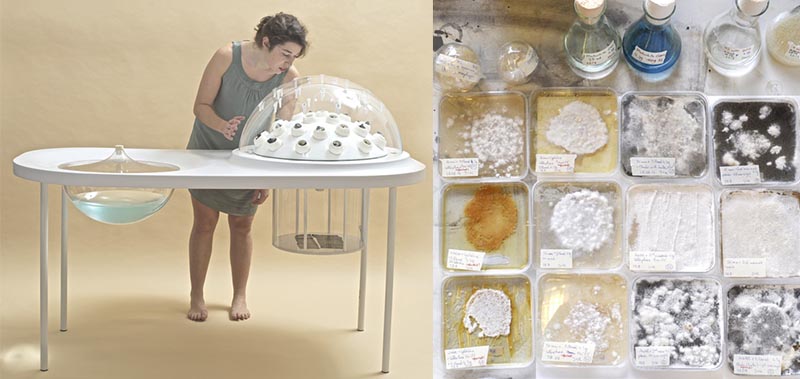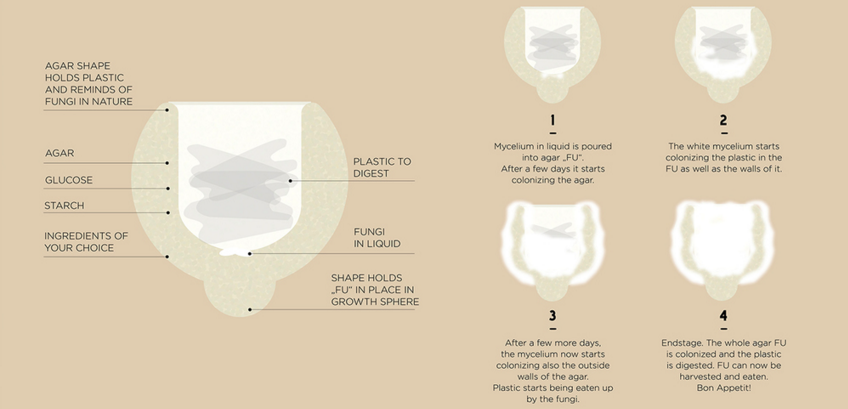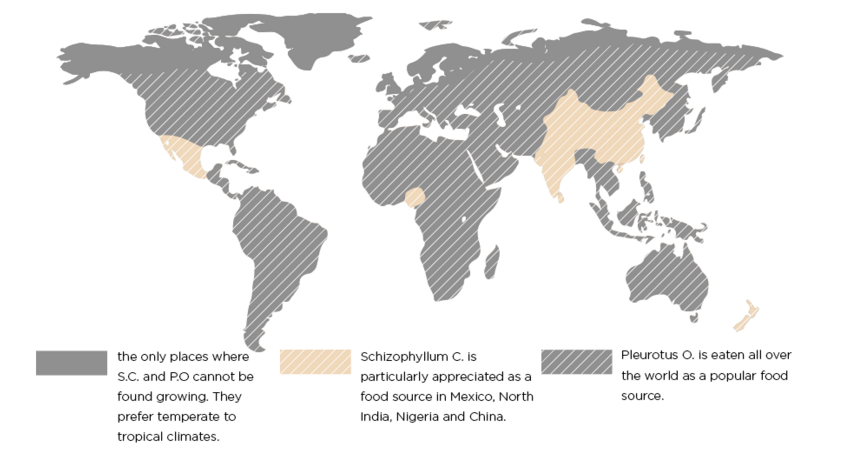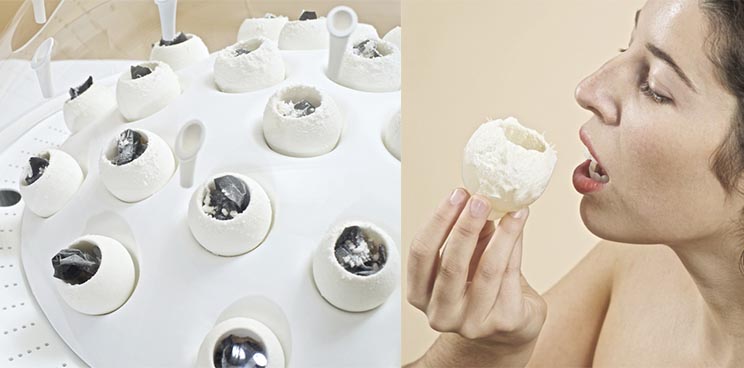You read that right. Austrian designers Katharina Unger and Julia Kaisinger have developed a device that turns polymer waste into edible mushrooms in collaboration with researchers from Utrecht University in the Netherlands. Dinner is served!
Take a few seconds to have a look around and count how many items near you have plastic components. From your laptop to the chair you are on or the frame of the window in from of you, …
Plastic makes the world go round. It’s cheap, it’s malleable, it’s versatile and it only has a tiny con: it’s terrible to naturally break down. Many approaches have tried to address this major concern, but none of those lines of attack look as tasty as this approach!

Foams and liquid nitrogen trends in cuisine have faded away. It is time for these démodé elements to make way for THE new ingredient: plastic! Directly to your plate, we present you the Fungi Mutarium which ‘grows food on toxic waste‘. Yummy.
The Fungi Mutarium prototype features several egg-shaped bowls made of agar, a jelly-like substance obtained from algae usually used as a growth medium for microbiological cell-cultures.

Both plastic-eating fungi and UV-sterilized plastic are introduced into the pods, where the fungi mycelium colonize the agar to digest the plastics. After a few weeks, the cups are ready to be harvested and beautifully served.
Of course, not every fungi species work. The device uses Schizophyllum commune and Pleurotus ostreatus, two fungi that were shown to degrade plastic and, perhaps even more importantly, are edible and already used in many parts of the world.
At least, I hope so, since the research behind the project haven’t been published yet… However, its creators seem very positive about it and they even designed the Fungi Cutlery, the culinary tools to eat the mushrooms.

The device even won the BioArt and Design Award (‘BAD’ award) – a collaboration between the Netherlands Organisation for Scientific Research (NWO), ZonMW , MU Artspace and the Waag Society, Eindhoven University of Technology and BioArt Laboratories.
Indeed, the latter was founded by a previous BioArtist we have written about, Jalila Essaïdi, who is famous for her outlandish ideas of spinning bullet proof skin with spider silk, produced by goats. So the BioArt community is certainly open-minded.

And although this installation might be far from an example of Biotechnology ‘saving the world’ from drowning into plastic waste, the whole creative process has helped both designers and biologists really think outside the box.
From the Great Pacific garbage patch to landfills or beach litter, plastic pollution is one of the major challenges humanity is facing. And it does looks delicious, so bon appétit!





